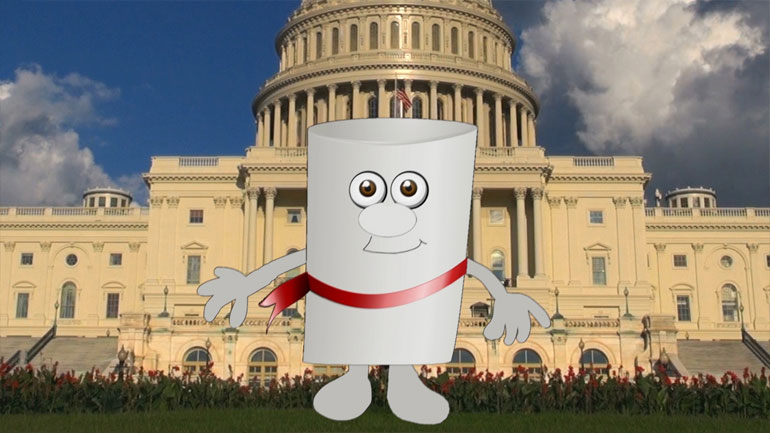ShmoopTube
Where Monty Python meets your 10th grade teacher.
Search Thousands of Shmoop Videos
U.S. History 1877-Present 4: Immigrant Workers and the Transcontinental Railroad 743 Views
Share It!
Description:
Immigrants built the transcontinental railroad, worked in our factories, and most importantly, brought new foods to the United States. Can you imagine not having access to bagels or chicken fried rice? No thank you.
Transcript
- 00:04
There's no doubt that immigrants had a huge hand in building [Men sawing wood]
- 00:07
modern America it was reported in 1910 that across 21 industry fifty-seven
- 00:13
point nine percent of all workers were foreign-born America was like that it's
- 00:18
a small world ride except all the multicultural kids and their parents [It's a small world ride appears]
- 00:22
were working in some dark factory instead of singing an annoyingly catchy
Full Transcript
- 00:26
song well the Transcontinental Railroad may be the most important infrastructure
- 00:30
project in American history was built almost entirely on immigrant labor the
- 00:36
Union Pacific Railroad Lange track westward from Omaha orga Rockies was
- 00:40
built mostly by Irishmen the Central Pacific Railroad moving eastward from [Train sounding horn moving eastward]
- 00:45
California across the Sierras employed mostly Chinese laborers by 1915 Eastern
- 00:52
European Jews dominated New York city's huge garment trade they also introduced
- 00:56
New York to the bagel and nothing's been the same since [Woman eating a bagel]
- 00:59
well the story for immigrants wasn't always completely awful either yes they
- 01:04
faced harsh working conditions but many were escaping starvation and total [Immigrant children working in factory]
- 01:08
unemployment back home some like the Russian Jews were also escaping ruthless
- 01:13
government religious persecution Russia's Czarist government sponsored
- 01:17
widespread violent pogroms murdering thousands of Jews while Jewish
- 01:21
immigrants certainly faced anti-semitism in America at least the US didn't [Jewish man approaches banner on a wall]
- 01:25
exactly have state-sponsored anti-semitic killing sprees some Jewish
- 01:29
immigrants even ended up truly living the American dream by eventually owning
- 01:33
their own garment shops these few showed that it was actually possible for
- 01:37
foreign immigrants to come to America work unbelievably hard and move beyond
- 01:42
manual labor and welcome to America baby economists and historians are still [Woman soaking in a bath]
- 01:47
debating the effects of immigration up until 1920 they don't always agree [Men discussing immigration]
- 01:51
because well you know they're all kind of opinionated but they do see eye to
- 01:54
eye on a couple of things immigration during the 19th and 20th centuries
- 01:58
boosted the growth of the economy why well mainly because most immigrants were
- 02:02
working age immigrant communities had less kids and old folks who contribute
- 02:07
little to no economic growth then did the native-born population
- 02:12
between 2/3 and 3/4ths of immigrants worked as unskilled laborers
- 02:16
who were willing to do pretty much anything for not a lot of money as a [Man cleaning out elephant waste]
- 02:20
result Americans who made their livings in unskilled labour also had to work for
- 02:24
less money loads of dudes willing to do the same
- 02:27
job for less came into Ellis Island every day which made it nearly [Man picks up stack of cash]
- 02:30
impossible that they no to a pay cut which it wasn't exactly great news for
- 02:35
native unskilled laborers while scholars still hotly debated fective unskilled
- 02:40
labour on the wages of skilled laborers would John's hand rolled cigar store [Boy hand rolling cigars]
- 02:44
suffer if Tim opened a factory that rolled cigars with highfalutin machines
- 02:49
well to Z cigar connoisseurs may continue to purchase John cigars at full [Man smoking cigar]
- 02:54
price really there were a bunch of factors at play here so the wage level
- 02:58
of skilled laborers operated on a case-by-case basis making it hard to pin
- 03:01
down the overall effect some scholars also say that cheap immigrant labor
- 03:05
helped to raise the incomes of middle-class white-collar workers and
- 03:08
lowered the cost of living across American society as a whole if you had a
- 03:13
lot of competition making stuff cheaper so it was easier for a normal [Man stood at a peanut stand]
- 03:16
middle-class American family to just buy stuff so in the end we say that early
- 03:20
immigration impact on the American economy was mostly but not entirely
- 03:24
positive ok that's not exactly genitive but below cut us some slack history is
- 03:28
complicated [Woman looking sad and wanting a bagel]
Up Next
Ever heard of a "living document"? They eat and breathe just like the rest of us! They even walk around on their own two legs. Okay, fine—maybe t...
Related Videos
If the Puritans had gotten their way, religion would play a much larger role in lawmaking these days. Want to know more? Watch the video for all th...
What happened between the creation of the Articles of Confederation and the ratification of the current U.S. Constitution? This video analyzes the...
The Modernists thought the world had a lot of problems, and they were intent on fixing them—or at least talking about fixing them. Unfortunately,...
This video explains Federalism and the quest for a fair balance between state and national power. It covers the progression and compromises of Fede...




